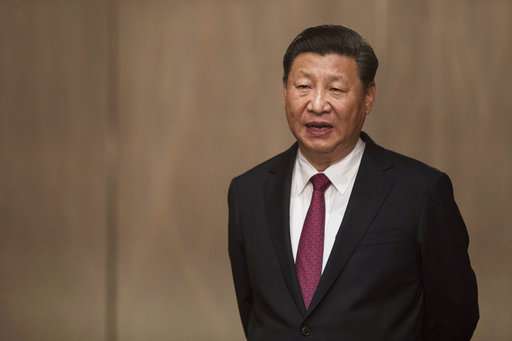China sets 2018 GDP growth target at 6.5%, defence budget three times higher than India's
China aims to maintain inflation level at around 3 per cent and create over 11 million new urban jobs, reports Xinhua news agency
China has set its GDP growth target at around 6.5 percent for 2018, unchanged from that for 2017, according to a government work report released on Monday.
Given China's economic fundamentals and capacity for job creation, GDP growth of around 6.5 per cent will enable China to achieve relatively full employment, according to the report delivered by Premier Li Keqiang at the first session of the 13th National People's Congress, China's top legislature.
China aims to maintain inflation level at around 3 per cent and create over 11 million new urban jobs, reports Xinhua news agency.
The surveyed urban unemployment rate is projected to stay within 5.5 per cent, the registered urban jobless rate within 4.5 per cent, the report showed.
The above targets take into consideration the need to secure a decisive victory in building a moderately prosperous society in all respects, and are fitting given the fact that China's economy is transitioning from a phase of rapid growth to a stage of high-quality development, Li said.
The GDP growth target is the same as that of last year, but might deliver different growth as China makes it clear to prioritize growth quality over pace.
"We will strongly promote high-quality development," said Premier Li.
Chinese economy outperformed its annual growth target by expanding 6.9 per cent last year, picking up for the first time in seven years.
The same GDP target set for this year should also be within reach without much difficulty, according to global China watchers.
The International Monetary Fund in January raised its forecast for China's GDP growth from 6.5 to 6.6 per cent amid an upbeat outlook for the global recovery. International investment banks including UBS, J.P. Morgan and Nomura also revised their China 2018 GDP growth prediction upward to as high as 6.7 per cent.
"We enjoy composite advantages, and all this means that we have the ability and the conditions to achieve higher quality, more efficient, fairer, and more sustainable development," Li added.
The country will completely open up its general manufacturing sector to foreign investors this year. Meanwhile, access to sectors like telecommunications, medical services, education, elderly care and new energy vehicles will also be expanded for foreign investment, according to Li.
China's rising middle-income group, with a population of around 400 million, show increasingly bigger appetite for imported products.
To encourage imports, China will host the first China International Import Expo this year and lower import tariffs on products including automobiles and some everyday consumer goods, said Li.
China also announced an 8.1 per cent increase of its defence expenditure for this year amounting to USD 175 billion, which is over three times higher than India’s defence budget.
The 2018 defence budget will be 1.11 trillion yuan (USD 175 billion), state-run Xinhua news agency quoted the official documents submitted to the National People’s Congress (NPC).
China last year increased the defence budget to USD 150.5 billion. China is the second largest spender on defence after the US. The defence budget of the US which is the highest in the world amounted to USD 602.8 billion.
The increase of China’s defence budget to 8.1 per cent this year, is three times higher than India’s latest defence budget of about USD 52.5 billion.
Though China announced its military spending at about USD 150.5 billion last year, observers say it is considerably higher, considering it is now building two more aircraft carriers in addition to the one already in service as well as addition of new jet fighters, including stealth fighter J-20.
Chinese Navy also expanded its global reach with flotilla ships sailing through the far-off oceans to expand China’s influence.
The official media justified the increase to USD 175 saying that, although slightly higher than the previous two years, the growth rate is the third time to dip into the single digit since 2013, following 7.6 per cent in 2016 and 7 per cent in 2017.
China’s defence budget takes up a smaller share of its gross domestic product (GDP) and national fiscal expenditure compared with other major countries, Zhang Yesui, spokesperson of the NPC told media here yesterday.
Its military spending per capita is also lower than other major countries, Zhang said.
“A large part of the growth of the defence budget is to make up for the low military spending in the past and is mainly used to upgrade equipment and improve the welfare of servicemen and women and the living and training conditions of grassroots troops,” he said.







No comments:
Post a Comment